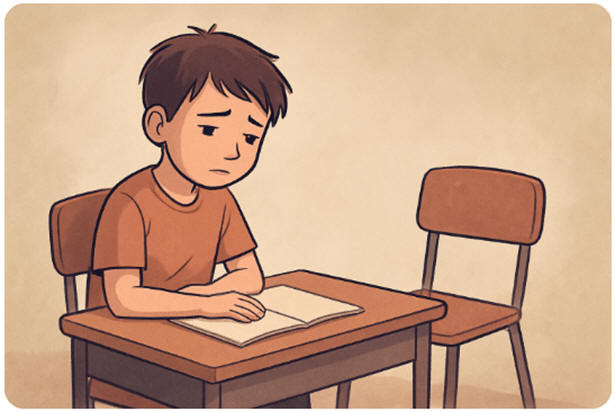|
|
||
|
Supporting a Bereaved Learner Losing a parent is one of the most difficult experiences a child can face. For a primary school learner, the death of a parent can be overwhelming, leaving them vulnerable, confused, and deeply affected in both their emotional and academic life. When the surviving parent is required to work long hours to provide for the family, the role of the school - and particularly the teacher - becomes even more critical. Teachers are often the caring adults who see the learner most consistently during the week, and the way they respond can make a significant difference in the child's journey of healing. Understanding the Grief Process in Children First, it's vital to recognize that children grieve differently than adults. Their grief can be intermittent, like waves crashing on a shore. They might seem perfectly fine one moment, laughing and playing, and then be overcome with sadness or anger the next. These emotional swings are normal. A child's grief can also manifest as behavioural changes, such as increased irritability, difficulty concentrating, or a regression to earlier behaviours like thumb-sucking or bed-wetting. Understanding this allows us to respond with empathy instead of frustration. Strategies for In-Class Support 1. Provide Emotional Safety The classroom should be a safe and supportive space where a grieving child feels accepted, understood, and secure. Teachers can show empathy by gently acknowledging the loss and reassuring the learner that they are available to listen. To further support emotional wellbeing, a quiet "calm-down" corner with soft pillows, books, or drawing materials can offer the child a safe retreat when feelings become overwhelming, with the understanding that this space is always available without judgment. 2. Maintain Routine and Structure Children in grief often crave stability. Keeping the daily classroom routine predictable can provide comfort and security. While flexibility is important, clearly communicating any changes is essential. The reassurance of structure helps the learner feel grounded when so much else in life feels uncertain. 3. Open the Lines of Communication Gently invite the child to talk about their feelings, but never force it. Use open-ended questions like, "How are you feeling today?" or "What's on your mind?" Let them know it's okay to feel sad, angry, or confused. Sharing age-appropriate books about loss and grief can also be an excellent way to initiate conversation and show them that their feelings are valid. 4. Work Closely with the Surviving Parent and Family Open and respectful communication with the surviving parent is essential. Teachers should share observations about the child's emotional and academic progress, while also asking how the learner is coping at home. The surviving parent, who is balancing work and parenting, will value knowing that the school is a supportive partner. Where needed, teachers can suggest community resources or professional counselling, and work with school counsellors or social workers to create a stronger support network for both the child and the family. 5. Encourage Peer Support Classmates often want to support a grieving peer but may not know how. Teachers can guide them by fostering a culture of empathy, kindness, and inclusion. Explaining in an age-appropriate way that their classmate is feeling very sad helps learners understand the situation and respond with sensitivity. Encouraging patience, friendship, and cooperative group activities not only prevents unintentional hurtful comments but also builds a supportive classroom community where the child feels less isolated. 6. Allow Flexibility in Learning Bereaved children often find it difficult to concentrate or stay motivated, so teachers should balance academic continuity with compassion. Flexibility with deadlines, workloads, or the length of assignments can ease the pressure, while extra time or short breaks during challenging tasks may help the learner cope. The aim is not to lower standards, but to adapt expectations to their temporary emotional state, showing both encouragement and belief in their ability to succeed while also valuing their wellbeing. 7. Watch for Signs of Struggle Grief can sometimes lead to behavioural or academic challenges. Teachers should be alert to changes such as withdrawal, anger, or declining performance. If needed, the learner can be referred to a school counsellor, social worker, or external support service. 8. Model Compassion and Resilience Learners watch how adults respond to difficult times. By modelling compassion, patience, and hope, teachers provide a living example of resilience that the child can draw strength from. Final Thought Teachers cannot replace a parent, but they can be a steady, caring presence that provides comfort and stability during a time of deep loss. By approaching the situation with compassion, flexibility, and an understanding of the child's needs, teachers help bereaved learners feel safe, supported, and valued. While they cannot take away the pain, they can walk alongside the child, offering consistent guidance and gentle encouragement that fosters healing and growth. ***** |
||
|
|
